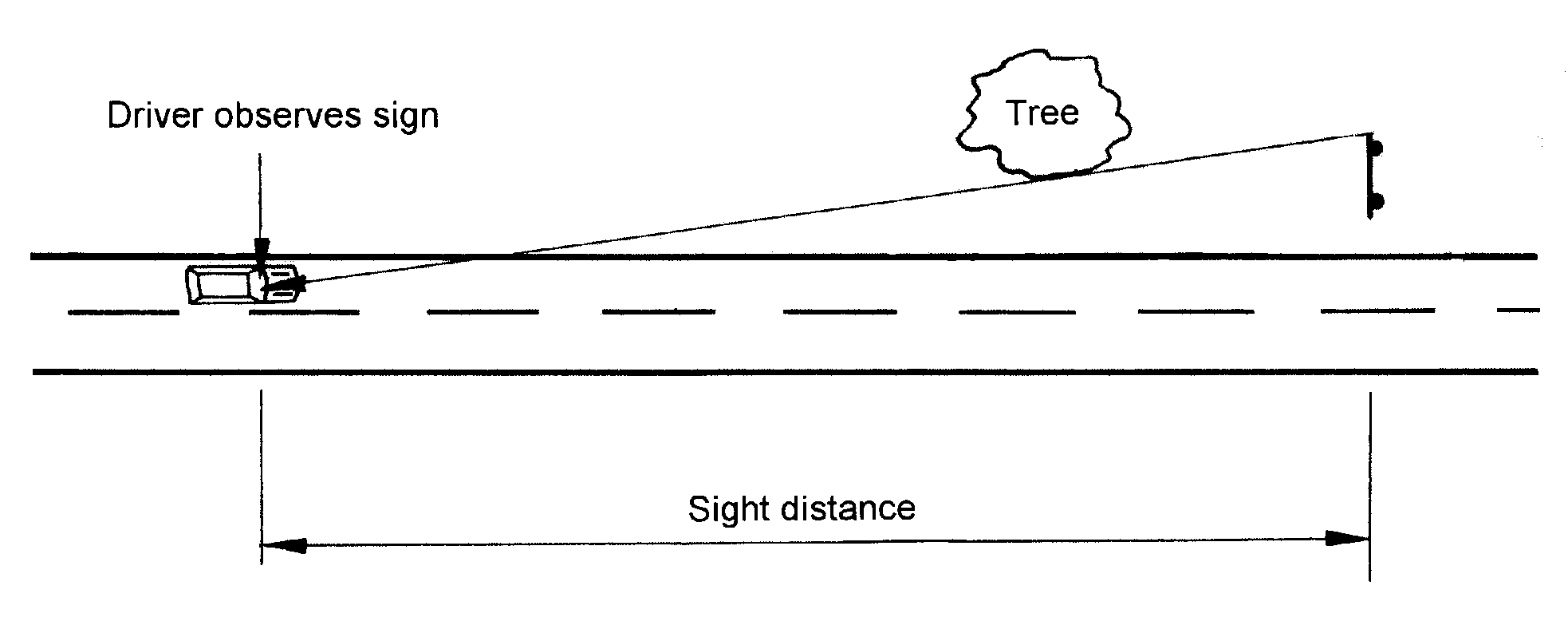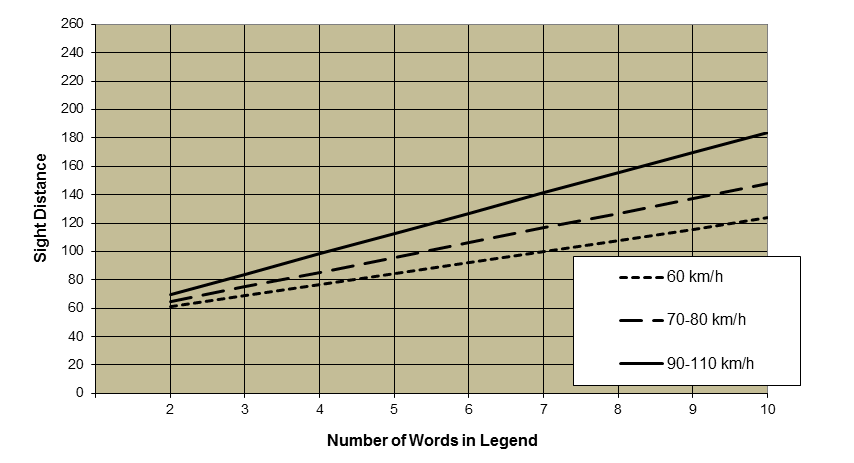Guideline for Determination of Sight Distance for Direction Signs
Table of Contents
1. Introduction
1.1 Background
Maintenance of the road verge is currently being undertaken under Integrated Service Arrangements and agreements with Local Governments. A need has been identified to determine the extent of pruning or clearing required to ensure that adequate visibility is achieved to direction signs. Moreover designers need to ensure that adequate sight distance to direction signs is available around horizontal curves, over crest curves and through bridge structures.
The purpose of this document is to provide operational guidelines that can be used to determine the required sight distances to direction signs and other large road signs.
1.2 Related Documents
"Direction Signs - Determination of Sight Distances" was prepared by Lachlan Millar of Millar and Associates. This document sets out the theoretical background into the determination of sight distances for direction signs which have been used for these guidelines.
2. Guidelines
Vegetation in the road verge can often obscure the visibility of direction signs and other large road signs and must be maintained to ensure that adequate visibility is available. These guidelines have been prepared to determine the extent of pruning or clearing of the vegetation that is necessary to achieve the required sight distances.
With reference to Figures 1 and 2, the sight distance to the direction sign is measured along the road from point at which the whole sign is visible to the driver. For multi-lane roads, the sign is to be viewed from the lane closest to the road verge. It is assumed that the driver's eye height is 1.10m and that the driver is located in the centre of the lane.

Figure 1: Horizontal Sight Distance Measurement

Figure 2: Vertical Sight Distance Measurement
Minimum sight distance requirements can be determined in Figures 3 and 4 using the approach speed and the number of words or symbols (excluding arrows) on the sign. The approach speed should be taken as the posted speed limit of the road or the normal operating speed on roads which have not been speed zoned.
The graph in Figure 3 should be used to determine the desirable minimum sight distance to the sign. If the measured sight distance is less than the minimum sight distance, tree pruning or clearing of low vegetation is required.
Sight distances given in Figure 4 should only be used where the sight distance determined from Figure 3 cannot be achieved without extensive clearing or because the visibility of the sign is obscured by a road embankment. The sign should be relocated if the minimum requirement in Figure 4 cannot be achieved.

Figure 3: Desirable Minimum Sight Distance Requirements

Figure 4: Absolute Minimum Sight Distance Requirements